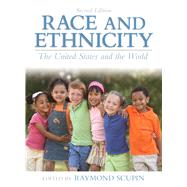
In This Section
I. Author Bio
II. Author Letter
I. Author Bio
Raymond Scupin is Professor of Anthropology and International Studies at Lindenwood University. His research interests include Asia, Islam, religion, race and ethnicity issues, and political economy. He has done ethnographic research in Thailand and among American Indians in California. Recent publications include Cultural Anthropology: A Global Perspective and Religion and Culture: An Anthropological Focus, both published by Prentice Hall.
II. Author Letter
Dear Colleague,
One of the major objectives of both sociology and anthropology is to comprehend both the differences and similarities among different groups of humans throughout the world. A major lesson derived from anthropological and sociological research is that as different groups learn about each other’s cultural values, norms, behaviours, goals, and aspirations, the less likely they are to maintain rigid stereotypes and misconceptions about one another, thus, one of the practical results of anthropological and sociological research is a reduction in racism, ethnocentrism, and in-group and out-group animosities and tensions.
I invite you to consider my new edition of Race and Ethnicity: The United States and the World (The Second Edition) to introduce your students to the most current, interesting, and exciting research in this field.
My text on race and ethnicity issues based on research contributions of anthropologists and sociologists provides undergraduate students an understanding of these phenomena from a global perspective. It covers the concept of ethnicity by demonstrating how anthropologists and sociologists do research on various ethnic, nationalist, and ethnonationalists issues. In fact, the first five chapters of R&E provide students with the state-of-the-art research on the history of scientific racialism, the contemporary concept of race as understood by modern anthropologists, and some provocative research on how humans tend to classify ethnic groups in essentialist forms all over the world. These chapters help students develop a more nuanced, up-to-date, critical view of race and ethnicity concepts and constructs.
Students are then introduced to the research of anthropologists and sociologists on race and ethnicity within the United States. Up-to-date chapters on Native American Indians, Wasps and white ethnics, Jewish Americans, African Americans, Hispanic/Latino Americans, Asian Americans and Arab Americans are written by specialists in these areas — combining history along with anthropological and sociological research on the contemporary conditions of these different ethnic groups in U.S. society. These chapters help expand the awareness of American or international students from many different backgrounds about the tremendous ethnic diversity in U.S. society.
Finally, students are introduced to the up-to-date chapters on race and ethnicity in Latin America and the Caribbean, Africa, the Middle East, Asia, Europe, and Canada — again, written by specialists who have conducted ethnographic and sociological research in these areas of the world. These final chapters build on the conceptual frameworks provided in earlier chapters to help illustrate these patterns and dimensions of race and ethnicity in a global context. These chapters provide students with insights about how colonialism, nationalism, racism, and ethnic relations have developed in various areas of the globe.
With Race and Ethnicity 2e, I believe you will be able to demonstrate how important anthropological and sociological research is in understanding race and ethnicity issues throughout the world. I am available for questions from anyone considering or reviewing this textbook at my email address, rscupin@lindenwood.edu.
Sincerely,
Raymond Scupin
Lindenwood University
BRIEF TABLE OF CONTENTS:
Part I: The Anthropology of Race and Ethnicity
Chapter 1: The Anthropology of Race and Ethnicity, Raymond Scupin
Chapter 2: The Concept of Race in Anthropology, Scott MacEachern
Chapter 3: A History of "Scientific" Racialism, Leonard Liebermanand Raymond Scupin
Chapter 4: Ethnicity, Raymond Scupin
Chapter 5: Ethnicity and Ethnocentrism: Are They Natural?, Donald E. Brown
Part II: The Anthropology of Race and Ethnicity in the U.S.
Chapter 6: U.S. Ethnic Relations: Anglos and the "White Ethnics," Raymond Scupin
Chapter 7: American Indians, Rachel Bonney and Raymond Scupin
Chapter 8: African Americans, Susan Love Brown
Chapter 9: Jewish Americans, Jack Glazier
Chapter 10: Hispanic/Latino Americans, Ellen Bigler
Chapter 11: Asian Americans, Janet Benson
Chapter 12: Arab Americans, Barbara Aswadand Thomas Abowd
Part III: Race and Ethnicity: A Global Focus
Chapter 13: Latin America and the Caribbean, Ronald Kephart
Chapter 14: Africa, Sheila Clarke-Ekong
Chapter 15: The Middle East, Laurie King-Irani
Chapter 16: Asia, Raymond Scupin
Chapter 17: Europe, Pamela Ballinger
Chapter 18: Canada, Norman Buchignani
Chapter 19: Conclusion, Raymond Scupin
The New copy of this book will include any supplemental materials advertised. Please check the title of the book to determine if it should include any access cards, study guides, lab manuals, CDs, etc.
The Used, Rental and eBook copies of this book are not guaranteed to include any supplemental materials. Typically, only the book itself is included. This is true even if the title states it includes any access cards, study guides, lab manuals, CDs, etc.